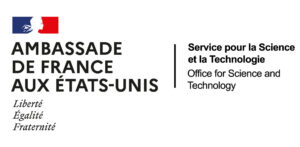los angeles
los angeles
los angeles
los angeles
los angeles
los angeles
los angeles
los angeles
La Synapse
La Synapse
La Synapse
La Synapse
La Synapse
La Synapse

History
Los Angeles is most famous for its Hollywood district, cradle of the American film industry. The city’s flagship industries of the 20th century, aeronautics and oil, have gradually given way to finance, telecommunications, healthcare and transportation. Tourism has also become a major industry, with attractions such as Disneyland and Universal Studios Hollywood, as well as landmarks such as the Hollywood Walk of Fame, Rodeo Drive, Venice Beach and Malibu, visited by millions of people every year.
The city offers a pleasant climate, a quality of life marked by the proximity of mountains suitable for hiking, sunny beaches and strong connectivity to the world thanks to the presence of Los Angeles International Airport (LAX), the largest airport on the West Coast, and its seaport, the busiest in the country and the third busiest in the world for container traffic.
General Economy
The video games and e-sport gaming industry is supported by the presence of Activision Blizzard Inc. 16 of the 60 e-sport teams based in the USA are based in Los Angeles. Life sciences are represented by over 350 research centers, laboratories and institutes as well as industry stalwarts such as Pfizer, Gilead and Thermo Fisher. For the fiscal year 2022, the National Institutes of Health (NIH) invested around $1.5B in the various medical research institutions in the city of Los Angeles. Major fund-raisings by medical startups ($250M by ACELERYN in November 2021, and $52M by Appia Bio in May 2021), confirm the interest and promising future of this industry in the Los Angeles region. As for the aerospace industry, it is bolstered by the recent successes of SpaceX and the development of the James Webb telescope by Northrop Grumman.
Science and Innovation
Innovation and entrepreneurship are supported by these institutions through various programs, incubators and accelerators; to name just a few: Startup UCLA, an incubator known for its Summer Accelerator program, UCLA Anderson Venture Accelerator and UCLA Health TechQuity Accelerator two accelerators specialized in fundraising; Caltech Office for Technology Transfer & Corporate Partnerships, an accelerator that has supported and helped raise $630M in 2021 and $8.7B since its creation; USC Marshall/Greif Incubator, an innovation support program offered by USC to its students and alumni.
Further south, San Diego’s innovation ecosystem relies on academic research at institutions such as Scripps, University of California San Diego (UCSD), and the Salk Institute.
Accompaniment and Support
In addition to accelerators and incubators at universities, support structures in the Los Angeles region have succeeded in developing the entrepreneurial scene. In this context, Cedars-Sinai Accelerator aims to accelerate startups in the medical field by offering practitioners the opportunity to meet other players in the healthcare world to challenge, prototype and test the products they develop; Amplify LA relies on personalized mentoring to support early-stage projects; Biolabs San Diego gives entrepreneurs the benefit of its network of pharmaceutical and biotech industry leaders such as Thermo Fisher, Eppendorf and Agilent. The non-profit organizations LA Cleantech Incubator and BioscienceLA aim to catalyze innovation in the fields of sustainable energy and life sciences respectively.




